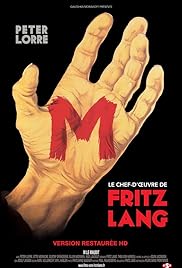Title: A Confederacy of Dunces
Rating: 5 Stars
It’s hard to get beyond the back story of this novel. John Kennedy Toole was a barely successful teacher that wrote a novel in 1963. He tried to sell it but found no takers. Depressed by this failure as well as beset by mental illness, Toole committed suicide in 1969 at the age of thirty-three.
His mother stumbled upon the manuscript. At this point, it was just a loose pile of poorly mimeographed sheets. Dedicated to getting the novel published in his memory, his mother, Thelma Toole, doggedly pursued publishing houses and anyone else that could help her.
The writer Walker Percy, himself a Pulitzer Prize winner, teaching literature in a university in Louisiana, became her target. She essentially barged into his office and refused to leave until he agreed to read the manuscript.
Looking at the mess of papers and aware of how poorly amateur authors usually write, Percy told himself that he only needed to read the first paragraph or the first page before discarding it. At first, he was disappointed because it wasn’t bad enough to immediately reject. As he continued reading, he became excited and by the end he knew that it needed to be published. After even more travail, it was published in 1980 and it won the Pulitzer Prize for literature.
So, that’s its torturous path to publication. What about the novel itself?
It’s the story of Ignatius J Reilly. He’s a 30 year old man living in New Orleans. He’s convinced that he’s a philosopher of the ages, filling notebook after notebook with his grandiose ideas. He is a believer in the classics and holds modern culture in deep disdain. Believing that his genius lies elsewhere, he is loathe to consider anything approaching a job. Nagged by his mother, he begrudgingly makes attempts to work at a pants factory and as a hot dog vendor. Unsurprisingly, his attempts end in disaster, usually both for himself and for his employer.
Meanwhile, his mother, Irene, is at her wits end and is being convinced by her friend to have Ignatius committed to an asylum. Burma Jones, reluctantly working as a janitor at a strip club for poverty wages to avoid a vagrancy charge, is actively trying to use Ignatius to sabotage the strip club in revenge. Meanwhile, Myrna Minkoff, Ignatius’ on and off semi-sort of girlfriend, is beseeching Ignatius to come to New York to aid her in her myriad causes.
If you can’t tell by now, it’s not exactly an A to Z plot. It’s more of a picaresque novel describing the life adventures of Ignatius.
Reading this, it’s hard not to compare Ignatius to Don Quixote. Much like Quixote, Ignatius has perhaps read too much and all of that reading has scrambled his mind. He’s constantly putting himself in ridiculous situations made even more ridiculous by his own grandiose actions. People that he interacts with treat him with astonishment, anger, or as the butt of their own jokes.
New Orleans is a character in the novel all by itself. Writing with great descriptive clarity, the sections of the city come alive with great clarity. So it goes with all of the characters. Reading this in the year 2020, the characters are broadly stereotypical (the gay man, the black man, the ditzy aspiring stripper), but even so there is a warmth and a humanity to each of them.
Ignatius is a whirlwind of riotous anarchy. Burma Jones, always hiding behind dark glasses and a blur of smoke, speaks with the wisdom of his years being a black man in New Orleans. Even minor characters like the inept put upon police officer, Angelo Mancuso, is rich with life. Everyone in the book is dialed up to eleven and jump off of the page.
In case it’s not clear yet, this is a very funny book. There are parts where I laughed out loud.
For a good time, open this book.




